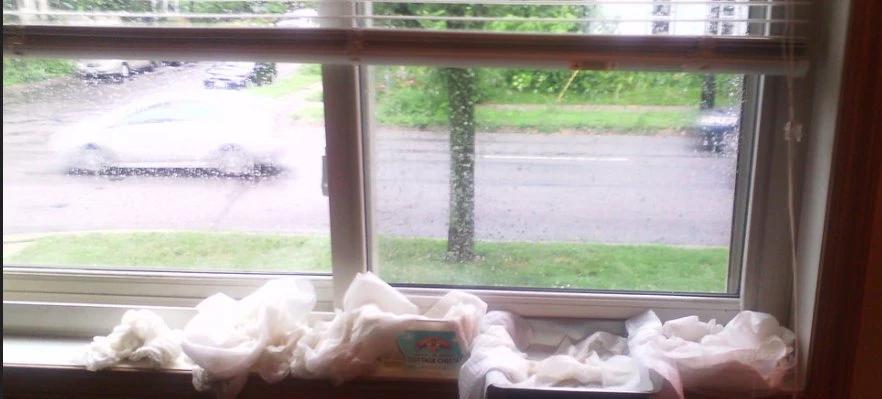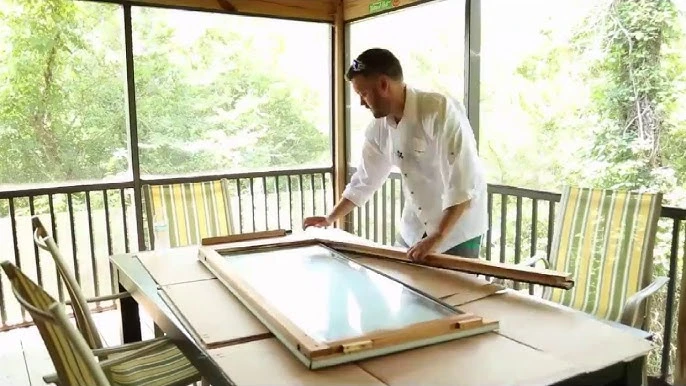Leaking wooden windows can be frustrating, but they can be effectively sealed with the right approach. Understanding the common causes of leaks is crucial for tackling this problem head-on. You can restore your windows’ integrity by identifying leakage points and following step-by-step solutions. Having the proper materials on hand simplifies the sealing process tremendously. Regular maintenance will ensure your sealed windows remain effective while enhancing their lifespan. If conventional methods don’t work or you face extensive damage, exploring alternative solutions may provide a viable path forward. It’s professional help or opting for new window installations; options are available to suit every need.
Common Causes of Leaking Wooden Windows

Wooden windows can leak for a variety of reasons. One common culprit is age. Over time, wood can warp or shrink, creating gaps that allow air and moisture to seep in. A frequent issue arises from poor sealing. If the original caulk or weather stripping has degraded, it may no longer provide adequate protection against the elements. Improper installation can lead to leaks right from the start. Windows not set squarely in their frames may create uneven spaces where water can intrude. Neglecting maintenance also plays a role. Cracks in paint or finish expose bare wood to moisture, which leads to further deterioration and eventual leaks. Seasonal changes impact wooden windows significantly. Fluctuating temperatures cause wood to expand and contract, potentially widening existing gaps.
Identifying the Leakage Points
Identifying the leakage points in wooden windows can be straightforward if you know where to look. Start by inspecting the window frames closely. Look for cracks or gaps between the wood and glass. Pay attention to areas where paint might be peeling or moisture stains appear on nearby walls. These are often telltale signs of a leak. If it’s worn out or missing, air and water could easily make their way inside. Another effective method is to perform a simple water test. Use a hose and gently spray water around the window while checking indoors for leaks. Seasonal changes that affect your windows’ performance. Wood expands and contracts with temperature fluctuations, creating new openings over time.
Steps to Fix a Leaking Wooden Window

Begin by assessing the window. Open and close it to check for any irregularities or gaps. Take note of where water might be getting in. Remove any old paint or caulk around the edges using a putty knife. This will give you a clean surface for sealing. Once cleaned up, apply new weatherstripping along the sashes. Make sure it fits snugly but allows smooth operation of the window. If there are cracks in the wood, fill them with epoxy wood filler. Smooth out any excess with a putty knife before it dries. Apply exterior-grade caulk around the frame’s perimeter where it meets the wall. This creates an effective barrier against moisture while enhancing insulation.
Materials Needed for Sealing a Window
When sealing a leaking wooden window, having the right materials is essential for a job well done. Start with high-quality weather stripping. This flexible material helps block drafts efficiently. You’ll need caulking. A good exterior-grade silicone or polyurethane caulk fills gaps and cracks around the window frame. Grab some sandpaper to smooth out any rough areas after applying wood filler. Stock up on tools like a putty knife and caulking gun to make application easier and cleaner.
Tips for Maintaining Sealed Windows
Regular inspections are key to maintaining sealed windows. Check for any signs of wear, like cracks or peeling paint. Catching issues early can save you time and money later. Cleaning your windows is also essential. Use a gentle cleaner to wipe down the glass and frames. It is important to avoid harsh chemicals that could damage the sealant. Applying a protective coating every few years. This adds an extra layer of defense against moisture and UV rays, extending the life of your seals. Ensure proper ventilation in your home as well. Good airflow reduces humidity levels, which helps prevent rot and mold around window frames. Keep an eye on outdoor landscaping near your windows. Trim back branches or shrubs that could scrape against the glass or frame over time, causing potential leaks in seals.
Alternative Solutions for Leaking Windows
Installing storm windows if sealing isn’t enough to fix your leaking wooden windows. These provide additional protection against the elements and can significantly reduce drafts. An option is to replace weather stripping. Old or damaged strips allow air and moisture to seep through. Upgrading them can enhance insulation and prevent leaks. For more serious cases, window inserts might be the answer. These fit snugly within existing frames and improve energy efficiency while blocking water from entering. If you’re looking for a temporary solution, use plastic sheeting during particularly rainy seasons. It’s not permanent but can help minimize damage until you implement a lasting fix. If all else fails, think about professional assistance. Experienced contractors can assess the situation thoroughly and recommend appropriate repairs or replacements tailored to your needs.




